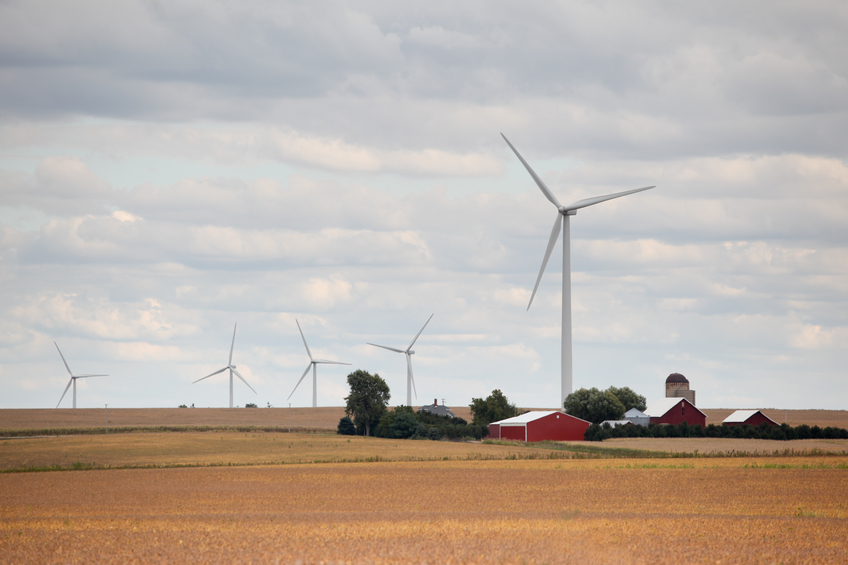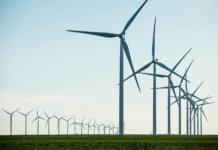Xcel Energy, a Minneapolis-headquartered electricity and natural gas provider, and the Department of Energy's National Renewable Energy Laboratory (NREL) recently unveiled their $2 million wind-to-hydrogen (wind2H2) test facility at NREL's National Wind Technology Center near Boulder, Colo.
This unique project transmits the electricity generated by a Northern Power Systems 100 kW wind turbine and a Bergey 10 kW wind turbine through water in order to split the water into hydrogen and oxygen. Production of the hydrogen will be accomplished with two different electrolyzer technologies, including Wallingford, Conn.-based Proton Energy's HOGEN 40RE proton exchange membrane (PEM) electrolyzer and Hunt Valley, Md.-based Teledyne Energy Systems Inc.'s HM-100 alkaline electrolyzer.
Both electrolyzer products have been modified for use with renewable energy technologies. Integration of these products with wind turbines, however, will be studied in detail at the wind2H2 facility.
‘One of the goals for this project is to identify and eliminate duplicative power electronic components in these commercially available products for use in hydrogen production facilities,’ says Ben Kroposki, senior project manager for NREL. ‘Another goal is to examine the influence on the electrolyzers of variability in the input power from wind turbines.’
Windlogics
The electrolyzers will produce hydrogen at 150 pounds per square inch (psi), and the hydrogen will be compressed to 3,500 psi for storage in steel tanks. The stored hydrogen can be used in the future to produce electricity with either internal combustion engines (ICE) or fuel cells. Algona, Iowa-based Hydrogen Engine Center Inc. has joined the project to help prove the practicality of using HEC's 60 kW hydrogen-powered generator set, which includes a generator and a modified Ford ICE, to produce electricity for delivery to the utility grid.
‘By marrying wind turbines to hydrogen production, we create a synergy that systematically reduces the drawbacks of each,’ says Richard Kelly, Xcel's president and chief executive officer.
On the one hand, wind power is variable " it can be unavailable when needed by the utility grid and available when it is not needed. On the other hand, while hydrogen is the most abundant chemical element, it occurs naturally only in combination with other elements. It is necessary to ‘harvest’ hydrogen by using a source of electricity in an electrolyzer or by extracting the element from natural gas. However, producing hydrogen as an environmentally friendly fuel source with resources that make emissions is counterintuitive. The wind2H2 facility takes advantage of zero-emissions electricity produced by wind turbines when the electricity is not needed by the utility grid to operate zero-emissions electrolyzers for hydrogen production.
According to Kroposki, the testing facility will be in operation at the National Wind Technology Center for two to three years. When testing is completed, he adds, components of the facility will be disconnected from the onsite turbines and moved to an as-yet-undetermined location on Xcel's distribution system.
NREL and Xcel plan to release a public update on the project in the summer of 2007. Data from the project will be shared with the Hydrogen Utility Group (HUG), which was founded in October 2005 by Xcel, Arizona Public Service, DTE Energy, Entergy, Fort Collins Utilities, Nebraska Public Power District, New York Power Authority, Sacramento Municipal Utility District and Southern Company in association with NREL, the Electric Power Research Institute and the National Hydrogen Association.
HUG members are seeking a place for utilities in a future hydrogen market. In a September 2006 report, ‘Electrolysis: Information and Opportunities for Electric Power Utilities,’ Kroposki and co-authors Johanna Levene and Kevin Harrison note that if the transportation market migrated to hydrogen-based vehicles, it ‘could be a large new opportunity for electric utilities to provide electricity for electrolysis or possibly provide the hydrogen end product.’
The authors add that it is possible for utilities to more than double the amount of electricity they provide currently through the production of hydrogen by means of electrolysis. More importantly, based on the findings of a 2005 NREL study, ‘Analysis of Hydrogen Production from Renewable Electricity Sources,’ the authors believe it is possible to accomplish this expansion with wind and solar resources only.
Xcel is working with the University of Minnesota West Central Research and Outreach Center on the development of another wind2H2 demonstration facility. This project, which will use the power from a 1.65 MW turbine that was erected in 2005, will examine the potential both of nitrogen fertilizer (i.e., anhydrous ammonia) production and hydrogen fuel production for the transportation industry.



